Photo Journey Along Japan’s Yumeshima Kaidō
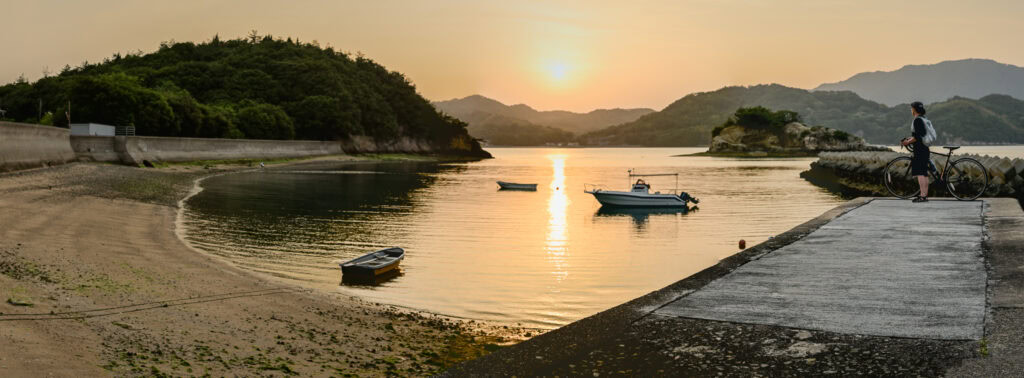
Japan’s Seto Inland Sea is scattered with hundreds of islands, each offering a unique mix of quiet fishing villages, citrus orchards, golden beaches, historic architecture, and active shipyards. While many of these islands are only accessible by ferry, some are connected by sweeping bridges that form part of the country’s inland expressways — and increasingly, scenic cycling routes like the lesser-known Yumeshima Kaidō.
The most famous of these is the Shimanami Kaidō, a well-known cycling route that connects Honshu to Shikoku via a chain of six islands. I’ve ridden that route before — it’s spectacular — but this time, we chose a quieter path.
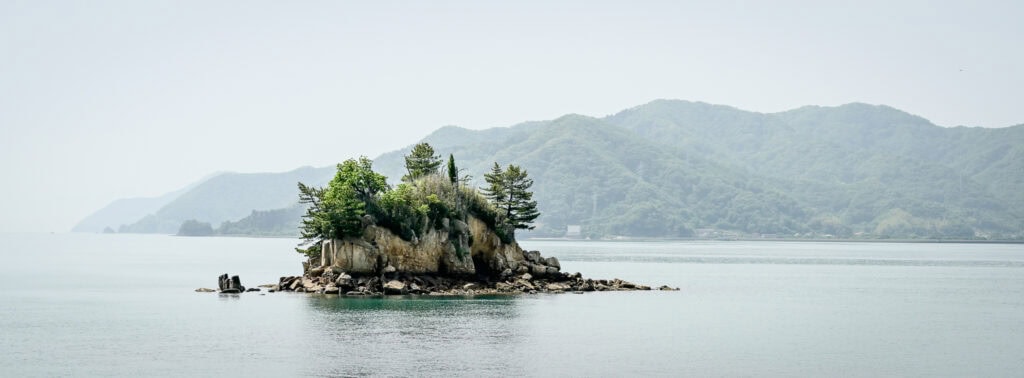
Midway through the Shimanami, we took a small ferry from Ikuchijima to Iwagi Island, entering the lesser-known Yumeshima Kaidō. This peaceful cycling route links four small islands — Iwagi, Ikinajima, Sashima, and Yugeshima — by elegant bridges and quiet roads with almost no traffic. What followed was a slower, more personal ride through a corner of Japan few people visit — capped off with a stay in a beautifully preserved traditional home on Yugeshima.
Minimal Bikepacking and One-Lens Photography
For this trip, I wanted to keep things as light as possible. I didn’t want to carry a backpack, so I set myself the challenge of fitting everything — overnight clothes, basic tools, and camera gear — into a couple of small bike bags and my camera hip pack.
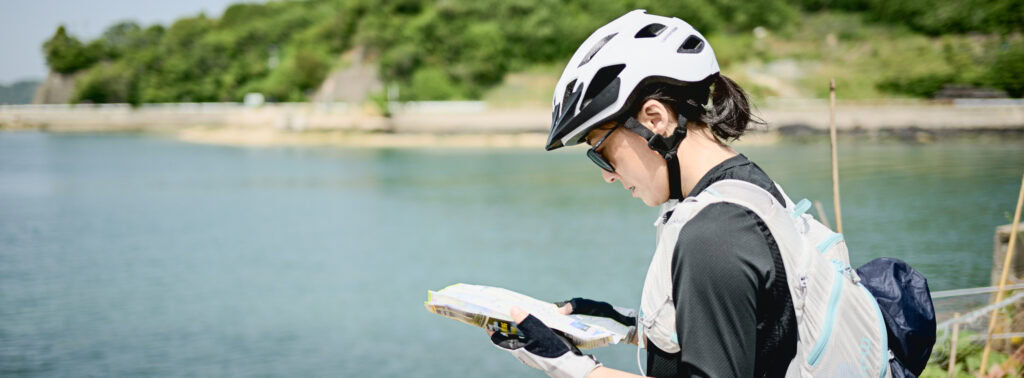
On the photography side, I went ultra-minimal: just my Nikon Z8 paired with the compact Z 40mm f/2.8 lens. While the Z8 isn’t exactly a small camera, it balances well with the 40mm and still fits comfortably in the hip pack. It’s a surprisingly versatile setup that worked great for this kind of trip.
Shooting this trip with just one lens — the 40mm f/2.8 — turned out to be a creative limitation that was actually freeing. It forced me to move more, think differently about framing, and stay light on the bike. I missed having a telephoto at times, but I loved how the 40mm kept me close to the experience. I only picked up this small, lightweight lens a few months ago for exactly this kind of situation — where I want the most minimal setup possible.
In the past, I avoided using prime lenses for travel and landscape work, always packing my larger zooms “just in case” I needed the flexibility. But a couple of years ago, I started shooting film, and one of the cameras I picked up had a fixed 50mm lens. At first, I found the restriction frustrating — but over time, I realized it was making my compositions stronger. I was forced to slow down and think about how to make a scene work within the limits of that one focal length.
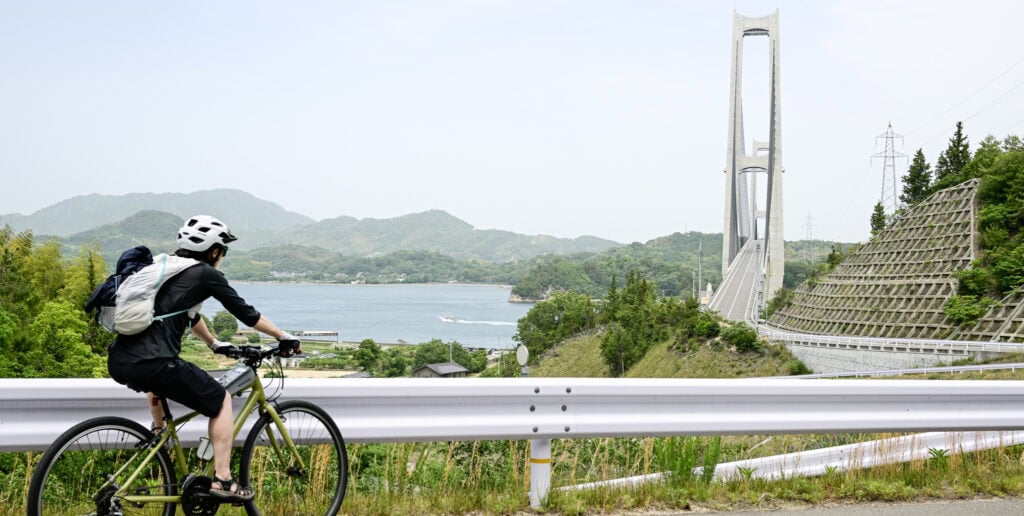
On this trip, the 40mm felt like a perfect middle ground — a little wider than 50mm, more forgiving, but still enough to make me deliberate with every shot. It made me more intentional, more observant, and in many ways, more creative.
Lately, I’ve also been loving the XPan-style panoramic crop, which you can see in a number of these photos. I’m drawn to how it helps tell a story — leading the eye across the frame and giving the images a sense of space and flow that feels different from traditional formats. I just wish the Z8 had an in-camera option to preview that aspect ratio. For now, I’m still guessing while shooting and cropping later, but I’m considering setting up crop overlays or guides to help frame more accurately in-camera next time.
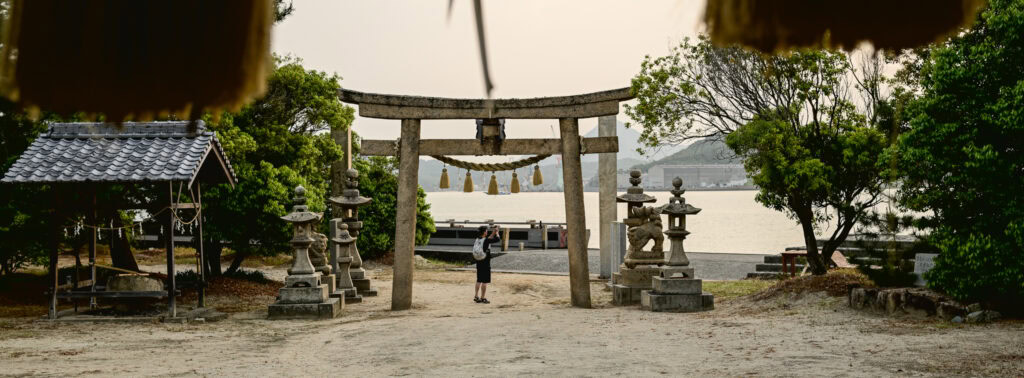
To get there, we traveled from Hiroshima (where we were based at the time) by train to Onomichi, where we rented bikes. We didn’t want to lug our own all the way down from Hokkaido, so renting made things simple and flexible.
From Shimanami Bridges to Quiet Island Roads
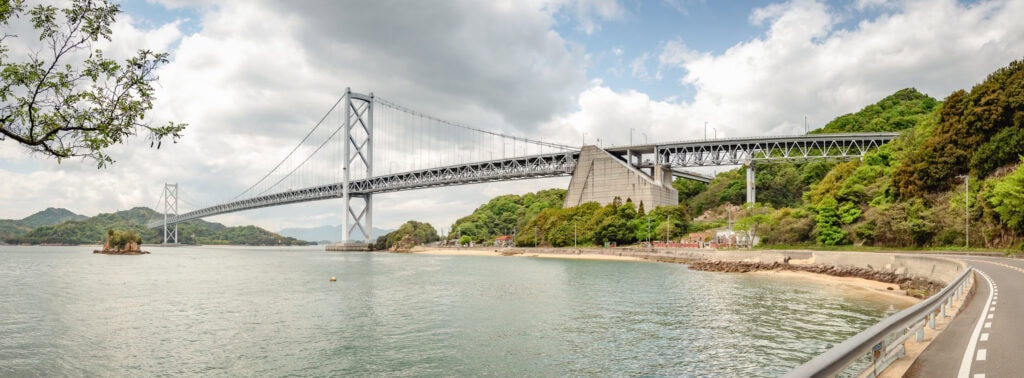
From Onomichi, we set off along the Shimanami Kaidō, heading toward Ikuchijima. The ride took us over several of the route’s iconic expressway bridges — massive structures that span the sea between the islands. It was about 40 km to reach our ferry point, and the day was hot and cloudless. Not exactly ideal light for photography, but I still ended up liking a few of the shots I captured along the way.
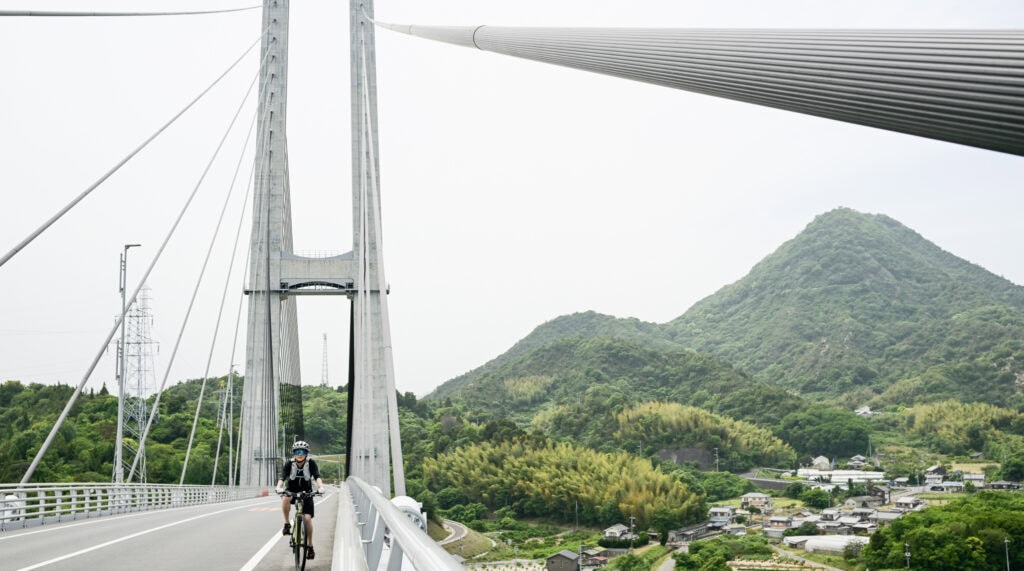
At the Ikuchi Island port, we caught a ferry across to Iwagi Island. These island ferries are super short and incredibly cheap — it cost just around 100 yen to cross with a bike, and the distance is only a few hundred meters. The crossing takes just a few minutes.
Once on Iwagi, we began following the Yumeshima Kaidō, a lesser-known cycling route connecting four small islands: Iwagi, Ikinajima, Sashima, and Yugeshima. Compared to the Shimanami, the roads here are much quieter and more relaxed — but also less clearly marked, with multiple options for how to loop around each island. We did a bit of exploring, but the heat was starting to wear us down, so we made our way straight to Yugeshima, specifically to the village of Kamiyuge.
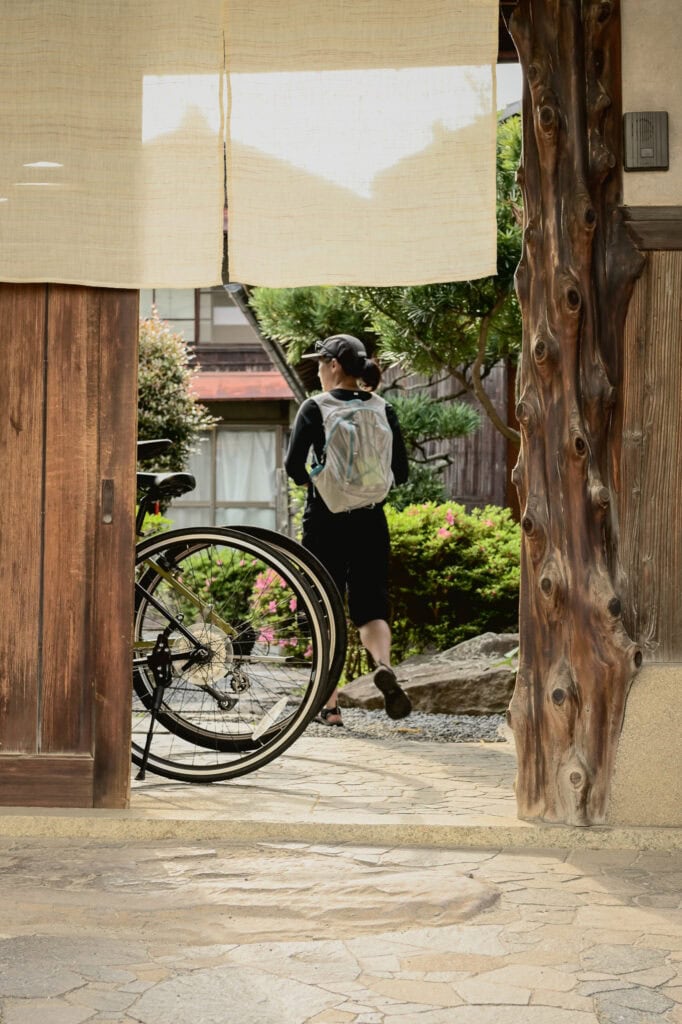
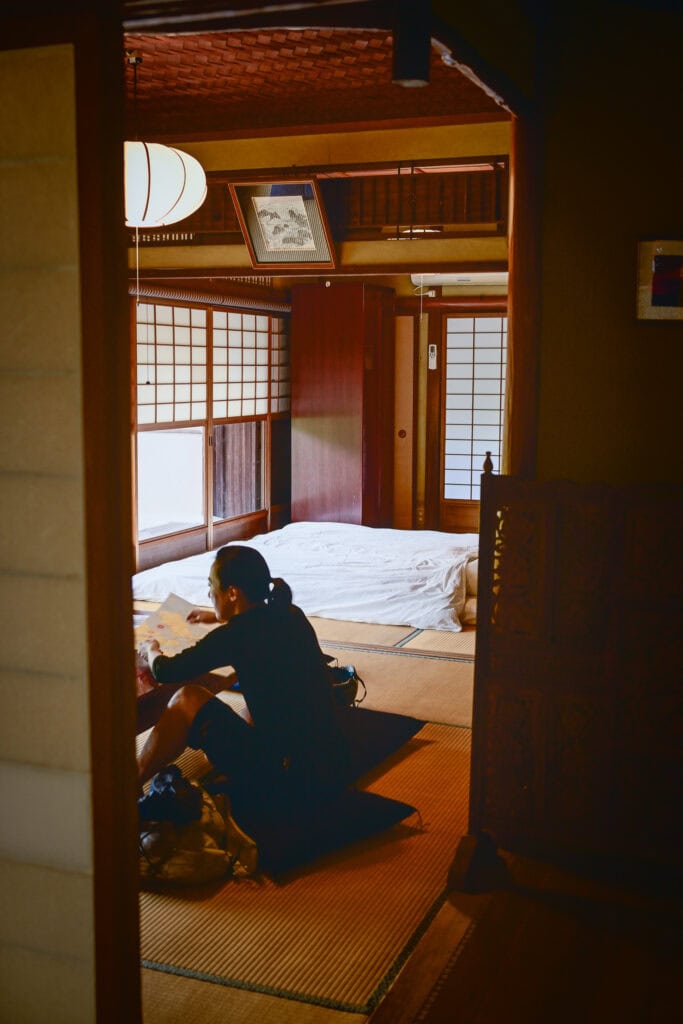
We stayed the night in a beautifully preserved traditional Japanese house in the quiet village of Kamiyuge on Yugeshima. The building was full of character — sliding doors, tatami floors, wooden beams — and we had the whole place to ourselves. It felt like stepping back in time, but with enough comfort to relax after a hot day of riding.
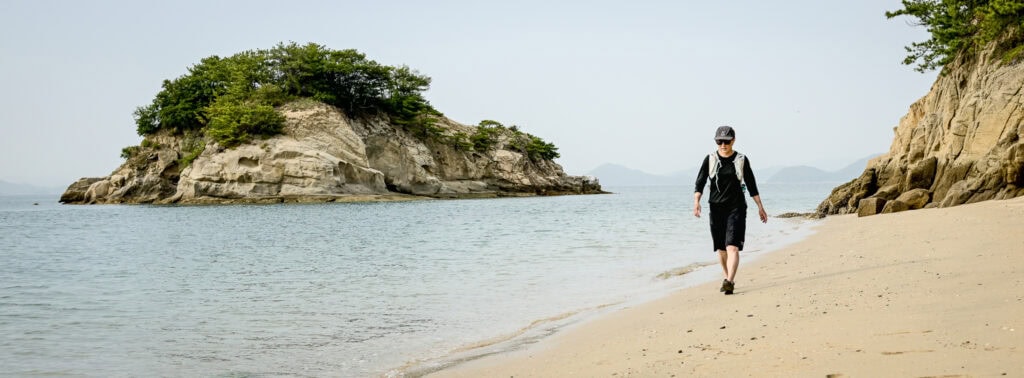
That evening, we headed out again to explore more of the island’s coastline. Wandering down narrow roads, we eventually stumbled across a secluded golden beach, completely empty and glowing in the late afternoon sun. We spent some time there just soaking in the calm, swimming, and watching the light shift over the water. As the sun dipped low, I pulled out my camera and started shooting — it was one of those moments where everything felt still and just right.
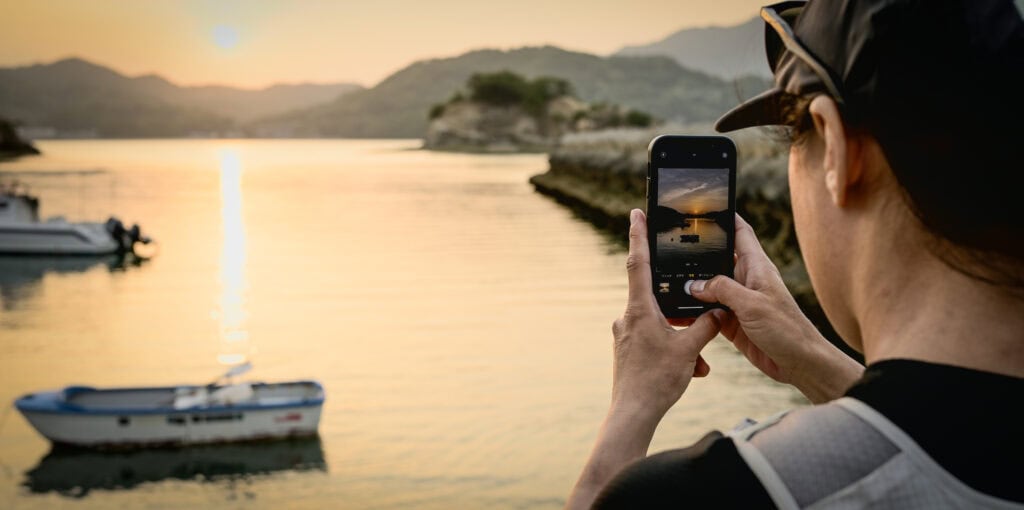
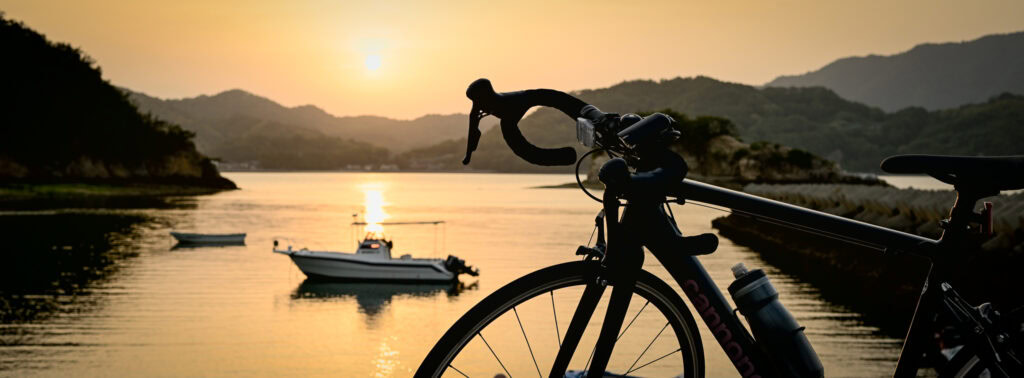
A Misty Morning and the Ride Back to Onomichi
The next morning, we set off again, this time looping around the backside of Yugeshima. The road was a lot hillier than the day before, but the effort was worth it — the views were stunning. The sea stretched out into layers of misty islands, giving that classic Setouchi feeling of floating through a painted landscape. It was easily one of the most scenic parts of the trip.
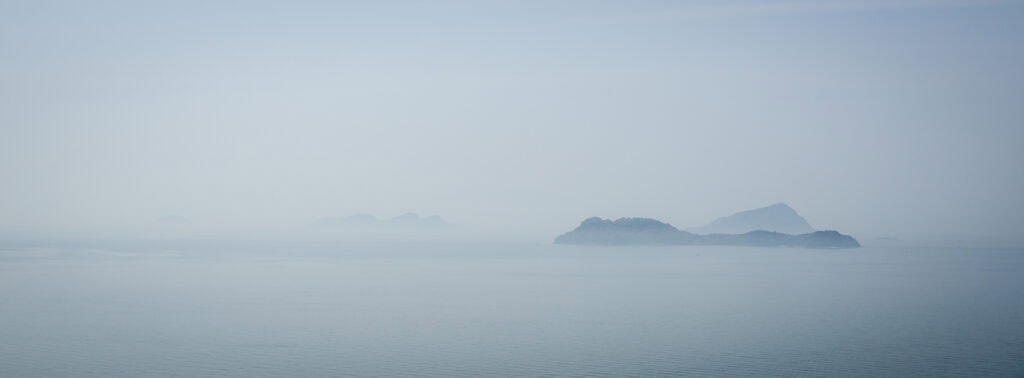
From there, we cycled over the bridges to Ikinajima, then caught another short ferry to Innoshima, where we rejoined the Shimanami Kaidō and made our way back to Onomichi.
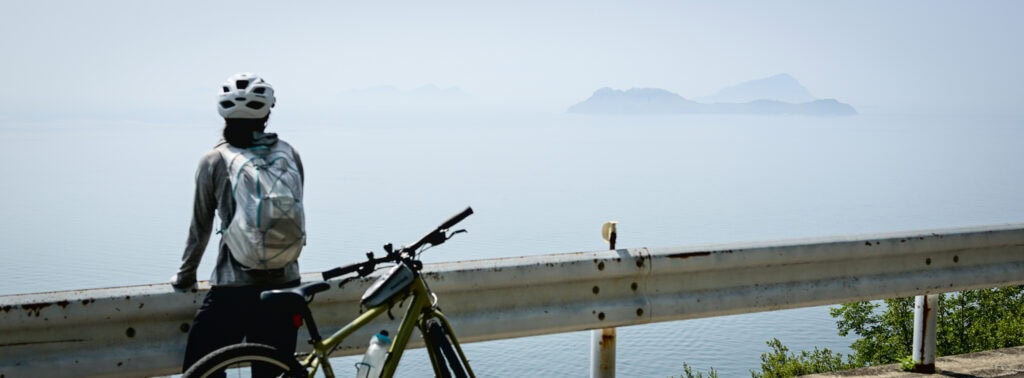
I’ve cycled a few different island routes in the Seto Inland Sea over the years — three or four now — and they each have their own distinct feel. But the Yumeshima Kaidō stood out. It was a bit more rugged and hilly than other routes, but also more peaceful and laid-back. The roads were quiet, the scenery was beautiful, and the people — as always in this region — were warm and welcoming.
It’s the kind of place that makes you slow down, take in the view, and enjoy the simple pleasure of riding your bike through Japan’s island heartland.
